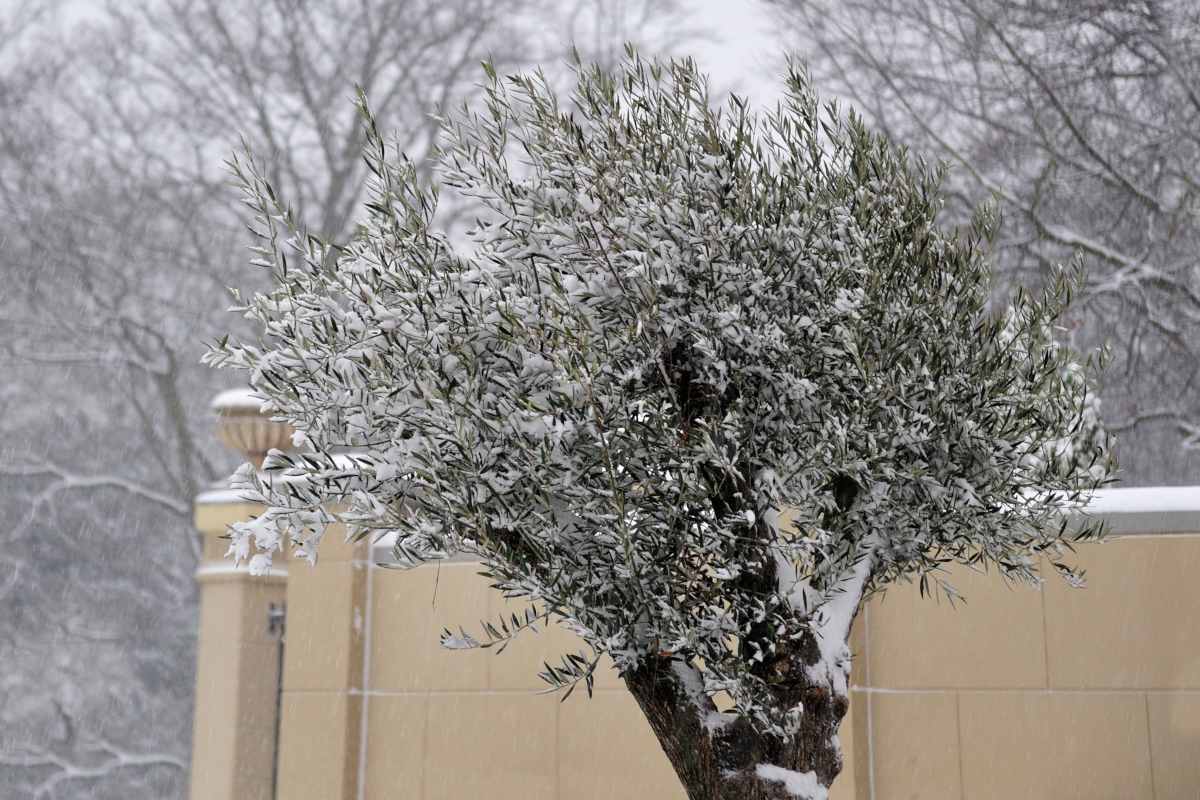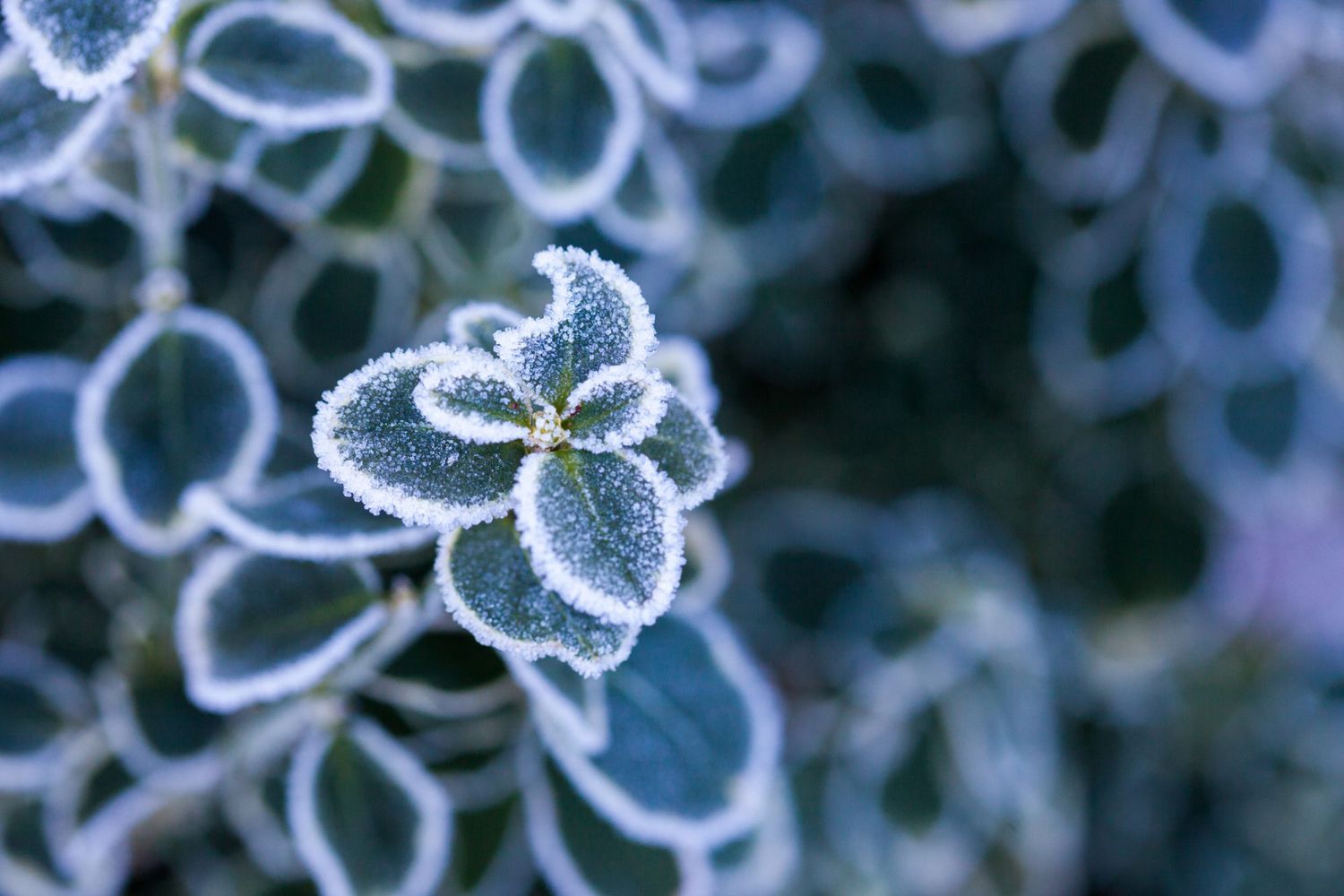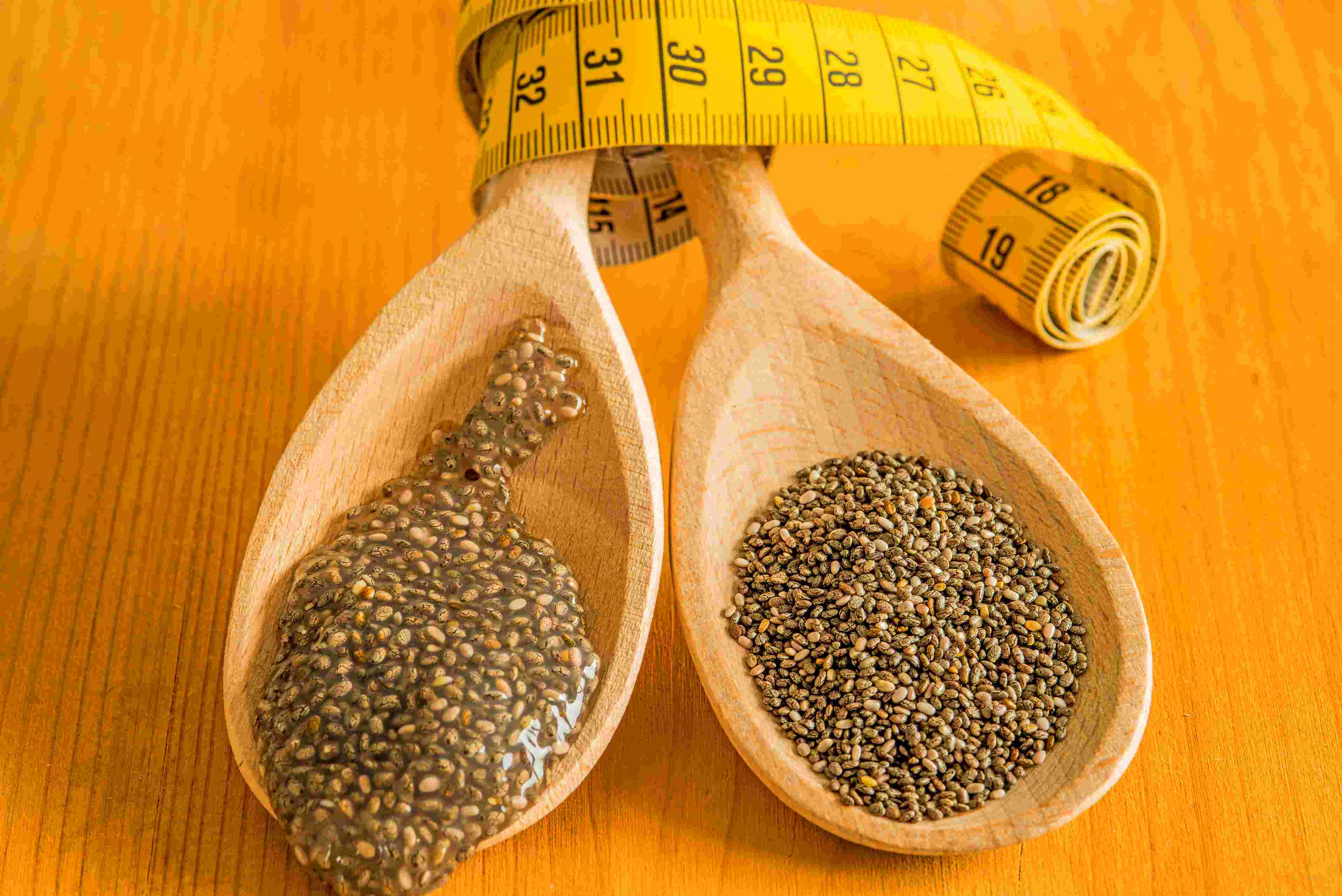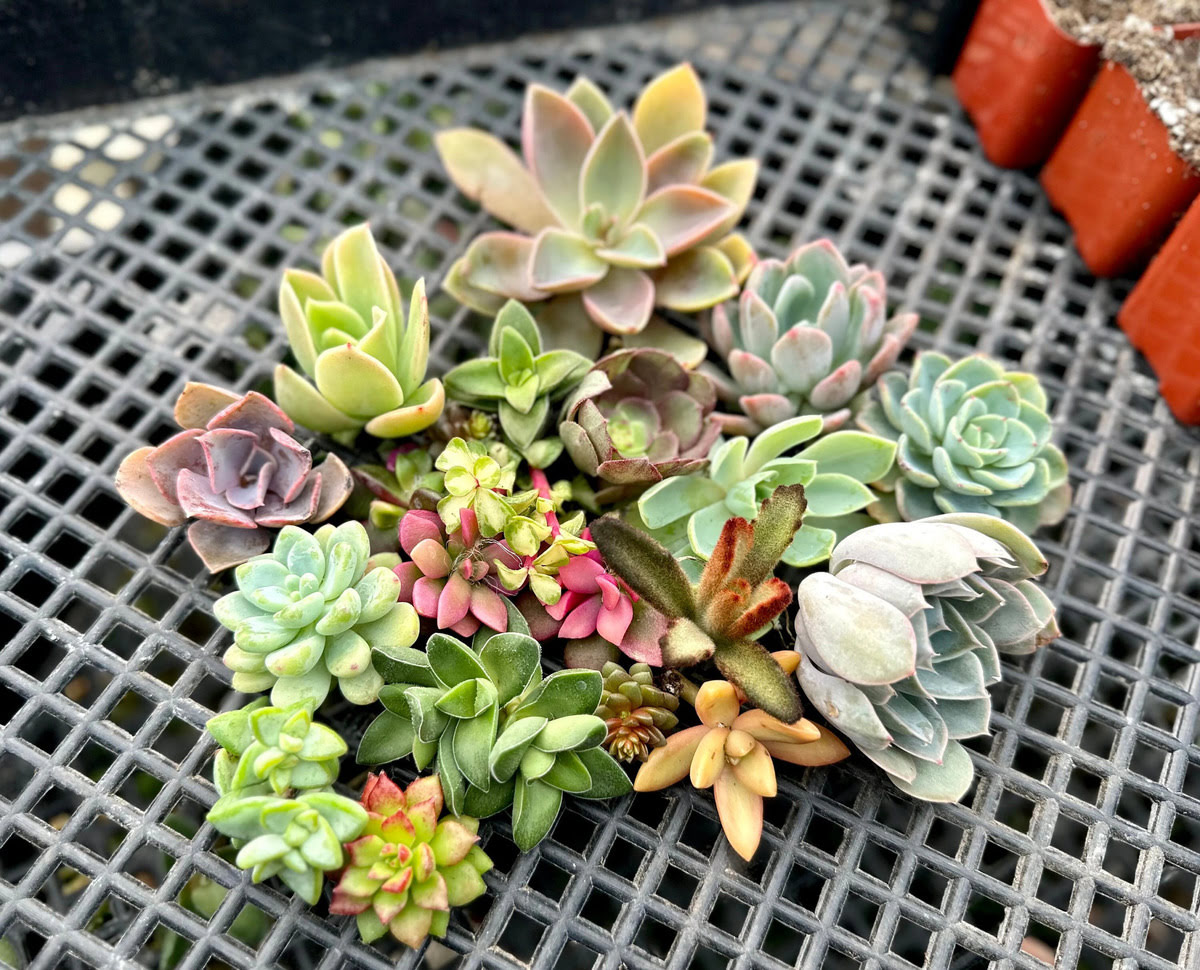Home>Gardening Techniques>Plant Care>How To Protect Succulents From Too Much Rain
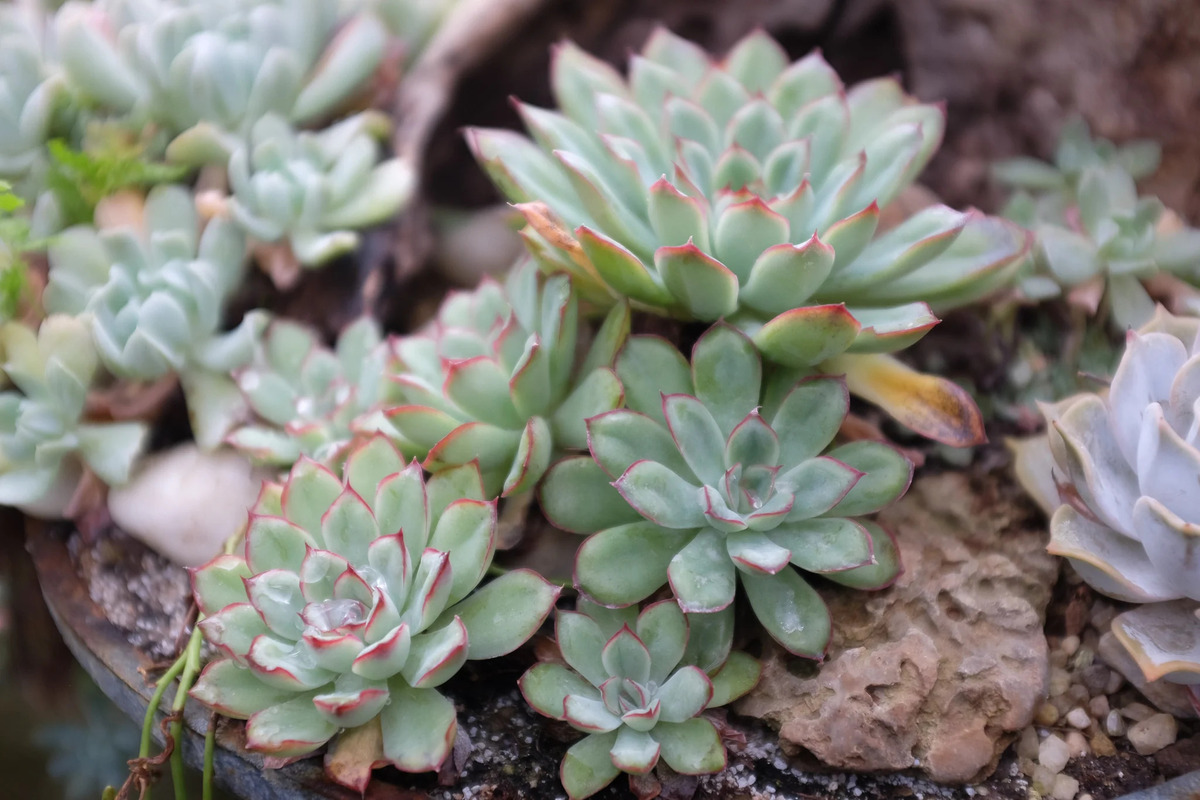

Plant Care
How To Protect Succulents From Too Much Rain
Modified: January 22, 2024
Learn effective plant care tips to protect your succulents from excessive rain. Safeguard your plants from water damage and ensure their optimal health and growth.
(Many of the links in this article redirect to a specific reviewed product. Your purchase of these products through affiliate links helps to generate commission for Chicagolandgardening.com, at no extra cost. Learn more)
Table of Contents
- Introduction
- Understanding Succulents and Their Rain Tolerance
- Signs of Overwatered Succulents
- Risks of Too Much Rain for Succulents
- Tips for Protecting Succulents from Excessive Rain
- Creating Proper Drainage for Succulent Containers
- Using Protective Covers or Greenhouses
- Adjusting Watering Schedule During Rainy Seasons
- Monitoring Weather Conditions and Acting Accordingly
- How to Salvage Overwatered Succulents
- Conclusion
Introduction
Welcome to the world of succulents, a diverse and fascinating group of plants that have captured the hearts of many indoor and outdoor garden enthusiasts. Succulents are known for their ability to store water in their leaves, stems, and roots, making them incredibly resilient and adaptable to various environments. However, like any plant, succulents require proper care and attention to thrive.
One crucial aspect of succulent care is ensuring they receive the right amount of water. While succulents are known for their ability to withstand drought-like conditions, they can be just as vulnerable to excessive moisture, especially when exposed to heavy rainfall. Too much rain can lead to a host of problems for these desert plants, such as root rot, leaf discoloration, and even the risk of death.
In this article, we will explore how to protect succulents from too much rain and the various steps you can take to safeguard these beautiful plants. Whether you are a seasoned succulent enthusiast or just starting your plant care journey, this guide will provide you with valuable insights on maintaining the health and vitality of your succulents during rainy seasons.
Understanding Succulents and Their Rain Tolerance
To effectively protect your succulents from excessive rain, it is crucial to understand their unique characteristics and their tolerance to moisture. Succulents are native to arid regions and have adapted to survive in environments with limited water availability. They have thick, fleshy leaves, stems, or roots that store water, allowing them to withstand extended periods of drought.
While succulents have built-in mechanisms to conserve water, they also have limits to their rain tolerance. Different succulent species have varying levels of tolerance to rainfall, with some being more sensitive to excess moisture than others. Understanding the specific needs of your succulent plants will help you determine the best course of action to protect them during rainy periods.
Some succulents, such as Sedums and Sempervivums, are known for their excellent rain tolerance and can withstand prolonged periods of wetness. These types of succulents have thicker leaves and well-developed root systems that help them quickly drain excess water and prevent root rot.
On the other hand, certain succulent varieties, like Echeverias and Haworthias, have a lower tolerance to excessive moisture. They have thinner leaves and shallower root systems, making them more susceptible to waterlogging. These types of succulents typically prefer drier conditions and require extra attention and care during rainy seasons.
Understanding the rain tolerance of different succulent species will guide you in implementing appropriate protection measures and adjusting your watering practices accordingly. By providing the right conditions for your succulents, you can ensure their health and longevity, even during periods of heavy rainfall.
Signs of Overwatered Succulents
Overwatering is one of the most common mistakes succulent enthusiasts make, especially during rainy seasons when the temptation to provide extra moisture is high. It’s important to recognize the signs of overwatering so that you can intervene and prevent further damage to your succulents.
One telltale sign of overwatered succulents is yellowing or transparent leaves. When succulents receive more water than they can absorb or drain, their leaves become waterlogged and start to lose their vibrant green color. Instead, you may notice a pale or translucent appearance, indicating that the succulent is struggling with excessive water.
Another sign to watch out for is the appearance of soft, mushy leaves. Overwatered succulents often develop a soft and squishy texture as the excess moisture compromises the structural integrity of the plant cells. This is a clear indication that the succulent is suffering from waterlogged conditions and is at risk of developing root rot.
In addition to visual cues, overwatered succulents may exhibit noticeable changes in their growth patterns. Rather than thriving and producing new offsets or leaves, overwatered succulents may appear stunted or show signs of wilting. The excessive moisture deprives the plant of oxygen and nutrients, resulting in slowed growth and decreased vitality.
Furthermore, root rot is a severe consequence of overwatering and can quickly lead to the demise of your succulent. If you notice a foul odor emanating from the soil or observe black, mushy roots upon inspection, it is likely that your succulent is suffering from root rot. Prompt action is crucial to salvage the plant and prevent the spread of this damaging condition.
By being vigilant and observant, you can recognize the early signs of overwatering in your succulents. Regularly inspect your plants for any changes in appearance, texture, or growth patterns, and adjust your watering practices accordingly to maintain their health and vitality.
Risks of Too Much Rain for Succulents
While succulents are known for their resilience, too much rain can pose significant risks to their health and survival. Understanding the potential dangers of excessive moisture will help you take proactive measures to protect your precious succulents.
One of the primary risks of too much rain for succulents is the development of root rot. Succulents are adapted to arid conditions and have shallow root systems that are not designed to handle prolonged exposure to water. When succulents are constantly saturated, their roots can become waterlogged and begin to rot. This inhibits their ability to take up water and nutrients, leading to wilting, discoloration, and eventual death of the plant.
In addition to root rot, excessive rain can also lead to fungal and bacterial diseases in succulents. The excess moisture creates a favorable environment for pathogens to thrive and attack weakened plants. Common diseases that can affect overwatered succulents include powdery mildew, leaf spot, and stem rot. These diseases can cause unsightly spots, decay, and lesions on the leaves and stems of succulents, ultimately impacting their overall health and appearance.
Furthermore, too much rain can result in nutrient leaching from the soil. As water continuously washes through the soil, essential nutrients are carried away, leaving behind an impoverished growing medium. This nutrient deficiency can weaken succulents and make them more susceptible to pests, diseases, and other stressors.
Lastly, excessive rain can also lead to an imbalance in soil pH levels. Some succulents are specially adapted to grow in slightly acidic or alkaline soils. However, heavy rainfall can cause the pH of the soil to become more neutral, which may not be optimal for these plants. Suboptimal pH levels can affect nutrient availability and uptake, further compromising the health and growth of succulents.
Understanding the risks of too much rain for succulents highlights the importance of implementing preventive measures to protect these plants. By taking appropriate actions to mitigate the effects of excessive moisture, you can maintain the health and beauty of your succulents and ensure their longevity.
Tips for Protecting Succulents from Excessive Rain
Protecting your succulents from excessive rain is crucial to maintaining their health and preventing damage caused by water-related issues. Here are some valuable tips to help safeguard your succulents during rainy seasons:
- Provide proper drainage: Ensure that your succulent containers have drainage holes to allow excess water to escape. This will prevent water from pooling around the roots and potentially causing root rot. Use well-draining soil specifically formulated for succulents to improve drainage.
- Use protective covers or greenhouses: Consider using covers or portable greenhouses to shield your succulents from heavy rainfall. These protective structures help divert rainwater away from the plants and maintain a drier environment. Just ensure that the covers are properly ventilated to prevent excessive humidity.
- Adjust watering schedule: During rainy periods, reduce the frequency of watering your succulents. The natural rainfall will provide them with adequate moisture, so it’s crucial not to overwater. Allow the soil to dry out between waterings to promote healthy root growth and prevent water-related issues.
- Monitor weather conditions: Stay informed about local weather forecasts to anticipate heavy rains. If you know a downpour is imminent, take proactive measures to protect your succulents before the rain starts. Move potted succulents under shelter or temporarily relocate them to covered areas.
- Prevent waterlogging: Avoid placing your succulents in low-lying areas or spots prone to water accumulation. If you notice water pooling around your plants during heavy rain, consider elevating them using bricks or stands to improve drainage and prevent waterlogging.
- Remove excess water: If heavy rain does cause water to accumulate in your succulent containers, carefully empty out the excess water. Be gentle when handling the plants to prevent any potential damage to their delicate leaves and stems.
- Protect outdoor succulents: If you have succulents planted directly in the ground, create small barriers or use natural slopes to redirect excess rainwater away from the plants. This will help prevent them from getting swamped and suffering from the negative effects of too much moisture.
By following these tips, you can effectively protect your succulents from the potential harm of excessive rain. Remember, it’s essential to strike a balance between providing enough moisture for your succulents’ needs and ensuring they aren’t overwhelmed by too much water. With care and attention, your succulents will thrive even during rainy seasons.
Creating Proper Drainage for Succulent Containers
One of the key factors in protecting your succulents from excessive rain is ensuring that their containers have proper drainage. Good drainage is essential for preventing water from pooling around the roots and causing root rot. Here are some tips for creating proper drainage for your succulent containers:
- Choose containers with drainage holes: When selecting containers for your succulents, opt for pots or planters that have drainage holes at the bottom. These holes allow excess water to escape and promote healthy root growth. Avoid using containers without drainage holes, as they can lead to waterlogging and damage to your plants.
- Use well-draining soil: It’s important to use a well-draining soil mix specifically formulated for succulents. These mixes usually contain a combination of components such as perlite, pumice, or coarse sand, which help improve drainage. Avoid using heavy, water-retentive soils, as they can hold excess moisture around the roots.
- Add drainage materials: To further enhance drainage, consider adding a layer of drainage materials at the bottom of the container before adding the soil. This can include small pebbles, gravel, or horticultural charcoal. These materials create a barrier and prevent the soil from becoming compacted, allowing water to flow freely through the container.
- Elevate the container: Placing the container on top of bricks or small feet can help elevate it and provide better airflow and drainage. This prevents water from becoming trapped underneath the pot, reducing the risk of water pooling around the roots of your succulents.
- Avoid overwatering: Even with proper drainage, overwatering can still lead to issues. Make sure to water your succulents thoroughly but allow the soil to dry out before watering again. This helps prevent excessive moisture buildup and promotes a healthy balance of water and air in the soil.
- Regularly inspect the drainage: Periodically check the drainage holes to ensure they are not clogged with debris or soil. Clear any blockages to maintain proper drainage. If you notice that water is draining too slowly, it may be a sign that the soil or drain holes need attention.
By following these guidelines, you can create optimal drainage conditions for your succulent containers. Proper drainage is essential for maintaining the health of your succulents and preventing water-related issues. Remember, succulents thrive in well-drained soil and are adapted to survive in arid conditions, so be mindful of their specific needs when caring for them.
Using Protective Covers or Greenhouses
Protective covers or greenhouses can be valuable tools in safeguarding your succulents from excessive rain. These structures help divert rainwater away from your plants and provide a controlled environment to mitigate the risks associated with heavy rainfall. Here’s how you can make the most of protective covers and greenhouses to protect your succulents:
- Choose the right cover: Select a cover or greenhouse that suits the size and number of succulents you need to protect. There are various options available, including individual plant covers, larger cloches, or miniature greenhouses. Assess your needs and choose a cover that provides adequate space for your succulents to grow.
- Ensure adequate ventilation: Proper ventilation is essential when using protective covers or greenhouses. Without adequate airflow, excess humidity can build up, which can increase the risk of fungal diseases. Ensure that the covers have ventilation holes or slits to allow for the exchange of air and prevent the buildup of moisture.
- Timing is key: Use protective covers or greenhouses strategically during periods of heavy rain. Monitor weather forecasts and place the covers in position before the rain starts. This proactive approach will help shield your succulents from excessive moisture and prevent potential waterlogging.
- Choose temporary or removable covers: Opt for covers or greenhouses that are easy to install and remove. This flexibility allows you to provide protection when needed and remove it during periods of clear weather. It also allows for easy inspection and maintenance of your succulents without disturbing their growth.
- Monitor moisture levels: While protective covers are designed to divert rainwater, it’s still important to monitor moisture levels within the cover. Check the soil moisture periodically and adjust your watering practices accordingly. Overwatering can still occur even with a cover, so ensure that the soil has a chance to dry out between waterings.
- Protect outdoor succulents: If you have succulents directly planted in the ground, consider using larger-scale covers or portable greenhouses to protect them. These structures can shield the entire plant, including the root system, from heavy rainfall and prevent waterlogged conditions.
Using protective covers or greenhouses can help protect your succulents from the detrimental effects of excessive rain. By creating a controlled environment and maintaining proper ventilation, you can mitigate the risks of water-related issues and maintain the health and beauty of your succulents.
Adjusting Watering Schedule During Rainy Seasons
During rainy seasons, it is crucial to adjust your watering schedule to accommodate the increased moisture from rainfall and prevent overwatering your succulents. Here are some tips to help you effectively manage your watering during rainy periods:
- Monitor soil moisture: Regularly check the moisture level of the soil in your succulent containers or garden beds. If the soil feels damp or moist, it indicates that the rainwater has provided sufficient hydration, and you can hold off on watering for a while.
- Allow for drying time: Succulents require well-draining soil and periods of dryness between waterings. Even during rainy seasons, it’s important to give the soil a chance to dry out before watering again. This prevents waterlogging and helps maintain the health of your succulents.
- Observe the weather: Keep an eye on upcoming weather forecasts to anticipate rain showers. If heavy rainfall is expected, it is advisable to hold off on watering your succulents to avoid excessive moisture accumulation.
- Adjust watering frequency: Reduce the frequency of your regular watering routine during rainy seasons. Succulents can thrive on less frequent watering when provided with adequate rainwater. Pay attention to the specific needs of your succulent species and adjust watering accordingly.
- Consider indoor succulents: If you have potted succulents indoors, you may need to adjust their location to prevent them from receiving excessive rainfall through windows or leaks. Additionally, monitor indoor humidity levels to ensure they are not too high, as this can also lead to overwatering.
- Use moisture meters: If you find it challenging to assess the moisture level of your succulent’s soil, consider using a moisture meter. These handy tools provide a simple and accurate way to determine if the soil is sufficiently dry before watering.
- Err on the side of caution: If you’re uncertain about whether to water your succulents during rainy seasons, it’s always better to err on the side of caution and wait. Succulents are adapted to withstand periods of drought, and they are more likely to recover from underwatering than overwatering.
By adjusting your watering schedule and closely monitoring soil moisture levels during rainy seasons, you can ensure that your succulents receive the right amount of water and avoid the risks associated with overwatering. Remember, maintaining a balance between moisture and dryness is key to the overall health and well-being of your succulents.
Monitoring Weather Conditions and Acting Accordingly
Monitoring weather conditions is crucial when it comes to protecting your succulents from excessive rain. By staying informed and taking appropriate action, you can minimize the risks associated with heavy rainfall and ensure the well-being of your plants. Here are some key steps to consider:
- Stay updated with weather forecasts: Regularly check local weather forecasts or use weather apps to stay informed about upcoming rainfall in your area. This will help you anticipate heavy rain events and be prepared to take necessary precautions.
- Know your succulents’ rain tolerance: Different succulent species have varying levels of rain tolerance. Some are more equipped to handle excess moisture, while others are more susceptible to damage. Understanding the rain tolerance of your specific succulent varieties will help you determine the level of protection they might need during rainy periods.
- Take action before heavy rainfall: If you know that heavy rain is on the way, take proactive steps to protect your succulents. Move potted succulents indoors or place them under covered areas to shield them from direct exposure to rain. For succulents planted in the ground, consider using umbrellas or temporary covers to divert rainwater away from the plants.
- Inspect your succulents: After a rainstorm, take the time to inspect your succulents for any signs of damage or water-related issues. Look for signs of overwatering, such as yellowing leaves or soft stems. If you notice any problems, address them promptly to prevent further damage.
- Adjust protection measures accordingly: As weather patterns can change throughout the rainy season, be ready to adjust your protection measures accordingly. If you notice that the frequency or intensity of rainfall is increasing, consider adding additional protective covers or implementing alternative protection strategies to ensure the well-being of your succulents.
- Consider microclimates: Different areas of your garden or outdoor space may have varying exposure to rain and drainage capabilities. Pay attention to these microclimates and adjust the positioning of your succulents accordingly. Placing them in areas that offer better protection or natural slopes for water runoff can help minimize the risks of excessive moisture.
- Learn from experience: Over time, you will develop a better understanding of how your succulents respond to rainy seasons and specific weather conditions. Use your past experiences and observations to inform your strategies in future rainy seasons and adapt your care practices accordingly.
By actively monitoring weather conditions and taking appropriate action, you can protect your succulents from the potential harm of excessive rain. Remember that each rainy season can present unique challenges, so remain vigilant and adaptable in caring for your succulents.
How to Salvage Overwatered Succulents
If your succulents have been overwatered, it’s important to take immediate action to salvage them and prevent further damage. Here are some steps you can take to rescue overwatered succulents:
- Assess the damage: Carefully examine your succulents to determine the extent of the overwatering. Look for signs of root rot, such as mushy or blackened roots, and any visible damage to the leaves or stems. Identifying the severity of the damage will help you determine the appropriate course of action.
- Remove the excess moisture: If the soil is saturated, carefully remove the excess water. Gently tip the container or soil to one side, allowing the water to drain out. Avoid pulling or disturbing the roots, as they may be delicate and vulnerable due to overwatering.
- Reassess the watering schedule: Evaluate your watering habits and adjust them to prevent further overwatering. Succulents require well-drained soil and a balance of moisture and dryness. Allow the soil to dry out completely before considering watering again, and be sure not to water as frequently as before.
- Repot if necessary: If your succulent is severely affected by overwatering, it may be necessary to repot it. Carefully remove the plant from the container, gently shake off excess soil, and inspect the roots. Trim any mushy or rotting roots with clean, sharp scissors or shears. Repot the succulent in fresh, well-draining soil to improve its chances of recovery.
- Provide proper airflow: Place your overwatered succulents in a well-ventilated area with good air circulation. This will help the excess moisture evaporate and prevent further fungal or bacterial growth. Avoid placing them in humid or dark areas, as this can exacerbate the issue.
- Reduce sunlight exposure: Diminish the amount of sunlight your overwatered succulents receive. Direct sunlight can worsen the stress on the plants while they are trying to recover. Provide them with indirect or filtered light until they show signs of improvement and regain their strength.
- Monitor and adjust care: Keep a close eye on your salvaged succulents and make adjustments to their care routine as needed. Check the moisture level of the soil regularly, ensure proper airflow, and gradually reintroduce them to their normal watering schedule once they start showing signs of recovery.
- Be patient: It’s important to remember that salvaging overwatered succulents takes time and patience. Some plants may recover quickly, while others may require more time and care. Give them the opportunity to heal and regain their health, and provide the necessary support for their recovery.
By taking immediate action and implementing these steps, you can increase the chances of salvaging overwatered succulents and helping them thrive once again. Remember, prevention is key, so always strive to strike the right balance of moisture for your succulents to avoid overwatering in the first place.
Conclusion
Caring for succulents during rainy seasons requires a delicate balance of providing adequate moisture while protecting them from the risks of excessive rain. By understanding the unique characteristics of succulents and their rain tolerance, as well as being aware of the signs of overwatering, you can take proactive steps to ensure their well-being.
Implementing measures such as creating proper drainage, using protective covers or greenhouses, adjusting your watering schedule, and monitoring weather conditions will help safeguard your succulents from the detrimental effects of excessive rain. These actions will mitigate the risks of root rot, fungal diseases, nutrient leaching, and imbalanced soil pH.
If you do encounter overwatered succulents, it’s important to act swiftly to salvage them. Through careful assessment, removing excess moisture, adjusting care practices, and providing a favorable environment, you can give your succulents a chance to recover and thrive once again.
Remember, each succulent is unique, and their care requirements may vary. It’s essential to observe your plants closely, adapt your care routine accordingly, and learn from their responses to environmental changes. With patience, dedication, and a good understanding of succulent care, you can enjoy the beauty and resilience of these remarkable plants, even during the rainy seasons.

